Category: Resident care
Posted by Dr. El - March 20, 2014 - Business Strategies, Customer service, Inspiration, McKnight's Long-Term Care News, Resident care, Something Good About Nursing Homes
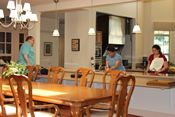
Here’s my latest article on McKnight’s Long-Term Care News:

In my last post, I discussed culture change and its positive impact on the mental health of the residents, particularly at Eden Alternative facilities. I recently also had the opportunity to tour a Green House, which I’d heard about but had never seen. While Eden Alternative homes change the culture of care within existing facilities, The Green House Project creates the “ideal” setting from the ground up.
The template of a Green House is a small building that is home to 10 to 12 residents, or “elders,” and two caregiving “Shahbaz,” which is the plural of Shahbazim. A Shahbazim is an aide trained to do almost everything that needs to be done within the house – providing care for the elders, laundering the clothes and bedding, performing light housekeeping, planning meals, cooking, serving the food, engaging the elders in activities, etc.
The house itself is designed to be more like a home, with private rooms off a large common area that includes a living room, dining area and kitchen.
I found this model turned everything I’d known about nursing homes upside down.
Green Hill visit
The first thing I noticed when I pulled up to Green Hill in West Orange, NJ, aside from the impressive entrance to this former hotel, was that there were parking spots reserved for visitors. By contrast, most of the nursing homes I’ve encountered have reserved spaces for upper level staff. This easily replicable idea offers a person-centered approach even before guests enter the facility.
Green Hill has four Green Houses in addition to its other levels of care. Ten elders reside in each of these small buildings in the back of the campus.
Walking into the Green House was very much like entering someone’s home. As I came through the entryway, there was a small, bright room on my left where I later interviewed one of the elders. On my right was a large, open kitchen. A computer monitor was discreetly tucked in the corner next to a glass cake stand holding a freshly baked cake.
For the entire article, visit:
For more on The Green House Project, visit their website.

Green Hill dining area and kitchen
Posted by Dr. El - March 6, 2014 - Business Strategies, Depression/Mental illness/Substance Abuse, McKnight's Long-Term Care News, Resident care
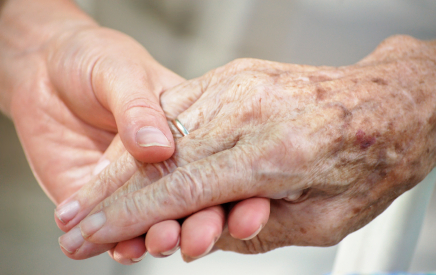
Here’s my latest article on McKnight’s Long-Term Care News:

I was speaking about leadership to a group of administrators recently when the discussion turned to person-centered care. “Culture change, the Eden Alternative, whatever you call it,” I said, “things are moving in that direction. MDS 3.0 has the team asking residents questions that staff members would have answered in the past, such as whether or not residents feel depressed.”
We talked about the impact of this and I continued, “In my experience, the nursing home I worked in that was most attentive to the psychosocial needs of the residents was the one that was in the process of becoming an Eden Alternative home.”
I’m not in any way affiliated with the culture change movement, but I certainly noticed the difference in the atmosphere in the Eden facility and its impact on the residents’ mental health. In traditional facilities, an enormous amount of the residents’ psychotherapy time is devoted to addressing how to work in or around the nursing home system if possible, and how to maintain their equanimity and sense of humor if not. This was less of a focus for residents in the Eden home.
When I work with the staff in a traditional nursing home, I’m often an emissary of the residents, delivering their messages in a way that can be heard by the staff. In the Eden facility, there are more emissaries and more people listening to what the residents have to say in the first place. Being heard is essential for good mental health.
For the entire article, visit:
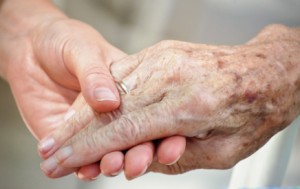
Posted by Dr. El - October 24, 2013 - Dementia, Engaging with families, Resident care

In the long-term care setting, we are often called upon to make difficult decisions on behalf of our elders with dementia. Some choices, such as refusing medical care, necessitate a capacity evaluation by a licensed and trained professional. Other decisions are made every day by staff and family members who desire to allow the resident autonomy yet need to keep them safe.
Today’s post is by clinical bioethicist Viki Kind, MA who discusses the use of the shared decision-making model to help residents with dementia and their families make decisions regarding care.

Viki Kind, MA, KindEthics.com
Many caregivers struggle with knowing when and how much to step in to protect the person in their care. It is especially difficult when the person is in the early stages of Alzheimer’s or dementia. As a clinical bioethicist, I have unique tools and strategies to help family caregivers navigate these difficult situations.
The Shared Decision Making Model is one of the tools I teach in my book, The Caregiver’s Path to Compassionate Decision Making: Making Choices for Those Who Can’t. This tool can be used to determine how much your loved one should participate in his or her important life and health decisions. With this tool, you can adjust this process to fit your loved one’s mental abilities as he or she changes over time. If your loved one has fluctuating capacity, you will need to adjust the age range as your loved one’s condition changes each day.
The Shared Decision Making Model states that we should include people in the decision-making process based on their mental age. Whether you estimate your loved one’s mental age or the doctor has given you an approximate age, your answer will fit into one of the following categories. These age ranges will help guide you as you begin to use the Shared Decision Making Model.
Zero to six years old
Seven to thirteen years old
Fourteen to seventeen years old
The way you figure out what your loved one’s mental age is by thinking about what a child would be allowed to do at different ages. (I am never saying that your loved one is a child, it is just a way to imagine how his or her abilities and needs have changed.) Would you leave the person home alone? Would you let them use a knife to butter their bread? Would the person be able to call 911 if there was a fire? Is the person able to remember enough details in order to make an informed and well thought out decision?
Most family caregivers I know either already have an idea of their person’s mental age or can figure it out when thinking about it in these terms. If you are a professional in a nursing facility, you will be able to evaluate for this as you get to know the resident.
And you don’t have to know exactly because these are age ranges, not absolute rules. You can adjust the age ranges up or down a little bit, but be careful about moving the mental age too much or you might end up using the tool in the wrong way.
Here are the basic guidelines of the Shared Decision Making Model. If the person in your care is in the zero-to-six-year-old age range, you will need to make the decisions for him or her because it wouldn’t be safe for the individual to participate in important decisions. If the person is in the seven-to-thirteen-year-old age range, he or she will be able to have a voice in some decisions but will not make the final decision. If the person is in the fourteen-to-seventeen-year-old age range, the individual may have enough capacity to make his or her own decisions.
The second tool that works with the first tool is the Sliding Scale for Decision Making which reminds us that the more dangerous or consequential the decision, the more mental capacity the person needs to have to be including in the decision making process. You wouldn’t allow someone who is six-years-old mentally to choose which nursing facility is right for him but you might allow someone who is mentally sixteen to make the decision or at least share in the decision-making process.
At the same time, you would allow the person who is mentally six to have the power to decide if he would like which activity he would like to attend because that isn’t a serious or important decision to make. The value of this process is it includes and empowers this person to have some control in their life, even when the more major decisions have been made for him.
With these two tools working together, you can evaluate the seriousness of the situation and if the person’s mental capacity changes, you can adjust how much he should participate in the decision-making process. In the nursing facility setting, these tools can give the professional caregiver the confidence to step in when necessary and to step back when it is not a very serious decision and the resident has enough mental ability to make the decision. Caregivers have told me that these strategies have reduced conflicts and improved patient-centered care.
Decision-Making and Dementia: Conversation with Viki Kind, MA
This 40-minute audio is designed for facilities and staff members wishing to learn more about using the Shared Decision-Making Model to address challenging decisions in the long-term care environment. Listeners will learn:
- Ways facilities can help families make decisions on behalf of their loved ones
- How to balance fall prevention with the resident’s desire to walk
- Ways to make good discharge decisions for residents with dementia
- The qualities of an effective ethics committee
- And more
Instant Download: Only $10.99
 Audio includes 5 FREE helpful decision-making resources!
Audio includes 5 FREE helpful decision-making resources!
Posted by Dr. El - October 17, 2013 - Customer service, McKnight's Long-Term Care News, Personal Reflections, Resident care
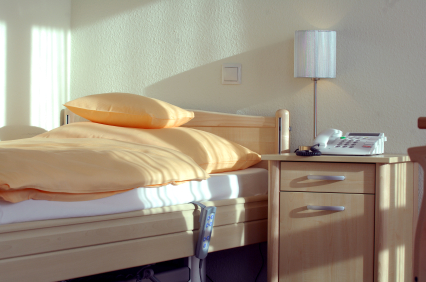
Here’s my latest article on McKnight’s Long-Term Care News:


I used to live in a fabulous old fourth-floor walk-up apartment in Manhattan. When I moved out of Manhattan to a borough of New York City for an elevator building with a laundry room in the basement, I made a conscious choice to pick a place I could live for the rest of my life if I had to. That ramp could come in handy if I need a wheelchair, I reasoned. And if worse comes to worse, I’ll move into a nursing home and blog from there.
A lot of residents tell me, “I never thought this (living in a nursing home) would happen to me.” After hundreds of these conversations, I have the opposite approach. I figure, “Why not me?”
But actually, I wouldn’t want to live in any of the nursing homes where I’ve worked. Sure, if I had to, I’d make do. I’d rabble-rouse and kvetch and roll to the administrator’s office if the situation called for it. I’m ready for a fight.
That was my thinking until last week when I toured the eldercare home of my dreams.
For the entire article, visit:
.
Posted by Dr. El - September 6, 2013 - Business Strategies, Customer service, McKnight's Long-Term Care News, Resident care

Here’s my latest article on McKnight’s Long-Term Care News:

Last week, McKnight’s staff writer Tim Mullaney wrote about the new Medicare guidance that guarantees that same-sex married couples can live in the same nursing home. Perhaps, like many of our current opposite-sex married couples, they’ll share the same room or apartment. Is your staff prepared to offer them the same respectful service they’re providing for your male/female couples? Are you prepared to lead the way, regardless of your personal beliefs regarding homosexuality? I’ll bet you’re not.
Why do I say this? Maybe your religion denounces homosexuality, yet you strive to be open (and have your facility open) to people from all walks of life. You might take a “live and let live” approach. But even if you are openly gay yourself and comfortable with your sexuality, chances are excellent that there are people on your staff who feel very uncomfortable with homosexuality and will need additional training in order to be able to successfully assist gay couples.
I say this because I worked with a well-meaning aide who, despite knowing nothing about my background really, repeatedly thought she had to try to “save” me through conversion to her (anti-gay) religion. As a psychologist, I could read and deflect her good intentions, but I doubt a gay couple under her care would feel the same way.
For the entire article, visit:

Posted by Dr. El - August 11, 2013 - Common Nursing Home Problems and How Psychologists Can Solve Them, Depression/Mental illness/Substance Abuse, McKnight's Long-Term Care News, Psychology Research Translated, Resident care, Stress/Crisis management

Here’s my latest article at McKnight’s Long-Term Care News:

According to researchers, 11% to 43% of LTC residents have thoughts of suicide1-3, with higher rates in larger facilities and in those with more staff turnover4. Other stressors include medical illness, the presence of a mood disorder such as depression, social isolation, and recent life stressors5 – factors that frequently affect our residents.
The MDS 3.0 requires that facilities ask residents questions regarding their risk of suicide. If a risk is identified, then effective protocols should be employed. In a June 2013 Annals of Long-Term Care review article, Challenges Associated with Managing Suicide Risk in Long-Term Care Facilities6, authors O’Riley, Nadorff, Conwell, and Edelstein offer alternatives to the procedures frequently in place in LTC settings – close observation or transfer to a psychiatric facility. These methods are often used unnecessarily, the authors note, due to staff fear of legal liability, concerns regarding their perceived competence in handling suicide risk, and the personal fear of losing a resident to suicide.
Essential for immediate risk
The authors argue that while close observation and hospitalization are essential when residents have the means, intent, and ability to end their lives at any moment (high risk situation), they’re ineffective in situations where there is a minimal or low risk of imminent death by suicide. For example, a resident may express thoughts of suicide but have no access to a means to do so or no ability to make use of an available means, making suicide very unlikely or virtually impossible. Other times a resident may have thoughts of suicide but no plans to do it any time soon. “If things get worse down the road,” they’ll sometimes say, “then I’m going to end it all.”
Ineffective for minimal risk
While a low or minimal risk should still be taken seriously, there is no evidence that it’s effective to put a resident on 15-minute checks or to send him or her to the psychiatric hospital.
For the entire article, visit:
 1.Haight B K. Suicide risk in frail elderly people relocated to nursing homes. Geriatr Nurs.1995;16(3):104-107.
1.Haight B K. Suicide risk in frail elderly people relocated to nursing homes. Geriatr Nurs.1995;16(3):104-107.
2. Malfent D, Wondrak T, Kapusta ND, Sonneck G. Suicidal ideation and its correlates among elderly in residential care homes. Int J Geriatr Psychiatry. 2009;25(8):843-849.
3. Ron P. Depression, hopelessness, and suicidal ideation among the elderly: a comparison between men and women living in nursing homes and in the community. J Gerontol Soc Work. 2004;43(2-3):97-116.
4. Osgood NJ. Environmental factors in suicide in long-term care facilities. Suicide Life Threat Behav. 1992;22(1):98-106.
5. Conwell Y, Van Orden K, Caine ED. Suicide in older adults. Psychiatr Clin North Am. 2011;34(2):451-468.
6. O’Riley A, Nadorff MR, Conwell Y, Edelstein B. Challenges associated with managing suicide risk in long-term care facilities. Annals of Long-Term Care. 2013;21(6):28-34.
Posted by Dr. El - June 28, 2013 - Books/media of note, Boomers, Business Strategies, McKnight's Long-Term Care News, Resident care, Younger residents

Here’s my latest article at McKnight’s Long-Term Care News:

Young adults in long-term care: a new resource for caregivers
According to a 2010 NPR report, young adults have been one of the fastest growing long-term care populations over the past 10 years, with 14% of nursing home residents under the age of 65. Some live in facilities that have specialized in the care of younger residents and others are in settings where almost all the other residents are seniors.
Both scenarios pose challenges in terms of accommodating the unique physical, emotional, and recreational needs of younger adults — and the reactions of staff members to their young charges.
Having spoken with many young residents and their bewildered staffers over the years, I know firsthand how challenging interactions can be. I wrote about some of the psychological issues and remedies in my 2008 McKnight’s guest column, Young adults in long-term care: the canaries in the coal mine, where I argued that the problems arising with young adults now are precursors to those that will be endemic when the assertive baby boomers arrive at our doors — unless we adapt as providers.
Younger adult toolkit
Recognizing the need for facilities to be better prepared, the American Medical Directors Association has released a toolkit on “The Younger Adult in the Long Term Care Setting” as part of its LTC Information Series. I had the pleasure of working on this project, which covers a wide range of matters affecting young adults and provides recommendations for addressing them.
The guide is one of the few sources of information on this understudied population. If your facility has even one young or boomer resident that staff members consider “demanding” or “a problem,” you’ll find this report invaluable.
For the rest of the article, visit:

Posted by Dr. El - April 17, 2013 - Dementia, Depression/Mental illness/Substance Abuse, McKnight's Long-Term Care News, Resident care


Here’s my latest column at McKnight’s Long-Term Care News:
I was hoping not to have occasion to write another column about tragedy so soon, but the terrible events at the Boston Marathon have prompted another look at how we deal within our facilities with distressing news.
In my previous article, Helping Your LTC Community Cope in the Wake of Hurricane Sandy, I offer post-disaster recommendations that are applicable in this situation. In this column, I focus on the amount of information we provide to residents about distressing outside events.
Sandy Hook
An aide was the first person who informed me about the shootings at Sandy Hook Elementary School last December, calling me into the dining room to see the news broadcast. “Children,” she said, “just little children. This is awful.” The TV was filled with images of horror and the dining room was filled with residents, all of who were in wheelchairs or recliners and most of whom had dementia. They were more or less trapped in there, watching repetitive distressing reports of a vulnerable population being inexplicably attacked.
Many residents talked about the children in their psychotherapy sessions that week. Staff members stopped me in the halls to comment and to be heard and comforted by the psychologist. My daughter is six years old, the same age as most of the Sandy Hook victims. I was present at work as needed and at home I skimmed the headlines and tried not to read the details.

Posted by Dr. El - April 8, 2013 - Business Strategies, Communication, Customer service, Depression/Mental illness/Substance Abuse, Engaging with families, McKnight's Long-Term Care News, Resident care
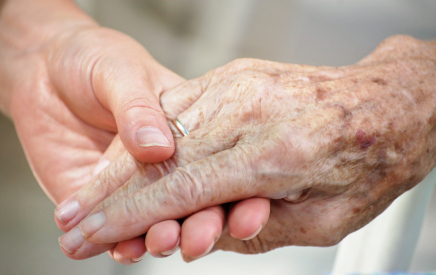

Here’s my latest column at McKnight’s Long-Term Care News:
I have great respect for those who attend to the often complicated physical needs of our long-term care residents, but if your facility doesn’t have a solid social service department, it isn’t as good as it could be. Yes, the medical care is vital, but the social service department addresses many of the issues essential to resident satisfaction.
Market researcher Margaret A. Wylde, PhD, notes that the three most important elements of satisfaction with a long-term care community are the friendliness of staff, the degree to which residents feel the community is their home, and the opportunity they have to stay connected with the rest of the world.
In her 2010 McKnight’s Online Expo talk, she stated that it’s very satisfied residents who refer others to their communities.
Consider the multitude of tasks the average social worker performs:
· Helps the resident settle into the facility
· Handles roommates conflicts
· Facilitates room changes
· Assists with the purchase of new clothing
· Locates or arranges for reimbursement of lost clothing
· Facilitates the signing of financial forms
· Explains and establishes advance directives
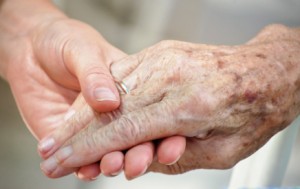
Posted by Dr. El - March 28, 2013 - Business Strategies, Customer service, Long-Term Living Magazine, Resident care

Here’s my latest article in Long-Term Living Magazine online:

When the psychologist arrived at Mrs. Winters’ room, she found her distraught and disheveled. “Last time you saw me I was stuck by that dresser in the corner and couldn’t get out. This time it’s something else!” She shook her fist at the ceiling and looked heavenward. “You know what that aide said to me?” She continued without waiting for a response. “When I told her I wanted to take my shower at night instead of this morning, she said I couldn’t! It was this morning or nothing. Of course I refused. What kind of nonsense is that? I’ve been taking nighttime showers my whole life!”This article, which follows last month’s post on physical design features in the long-term care setting, addresses two additional areas of care that can be modified to offer more control and autonomy to those we serve—scheduling and training. Increasing control is important because residents often enter long-term care due to sudden and unexpected health problems that have thrown them intocrisis. When residents perceive control over what is generally a highly structured new environment, it helps them cope with stressors, reduces their depression and anxiety and increases their satisfaction with care.
SCHEDULING FEATURES
Offering increased flexibility within daily schedules can provide opportunities for residents to have more choice in how their days unfold. They engage in the same activities such as rehab and dining, but they can arrange their days to meet their own preferences rather than subsume their desires to the nursing home schedule.
Many adjustments in scheduling can be made without dramatic shifts in the staff routine, such as offering residents their choice of shower time. Rather than incorporating a multitude of changes simultaneously, new areas of flexibility can open up sequentially, giving the staff (and residents) time to adapt and to consider other parts of the schedule that can become more adjustable.
TRAINING FEATURES
Offering more choices for residents will be as successful as the reception from the staff. If resident requests receive sighs, frowns and obvious irritation, residents will quickly learn that the options are for marketing purposes only and that they won’t be implemented without repercussions. In that case, because their wellbeing depends on the good will of the staff, only the feistiest residents will take advantage of newly created choices.
For more, visit LTL magazine online:














 1.Haight B K. Suicide risk in frail elderly people relocated to nursing homes. Geriatr Nurs.1995;16(3):104-107.
1.Haight B K. Suicide risk in frail elderly people relocated to nursing homes. Geriatr Nurs.1995;16(3):104-107. 




